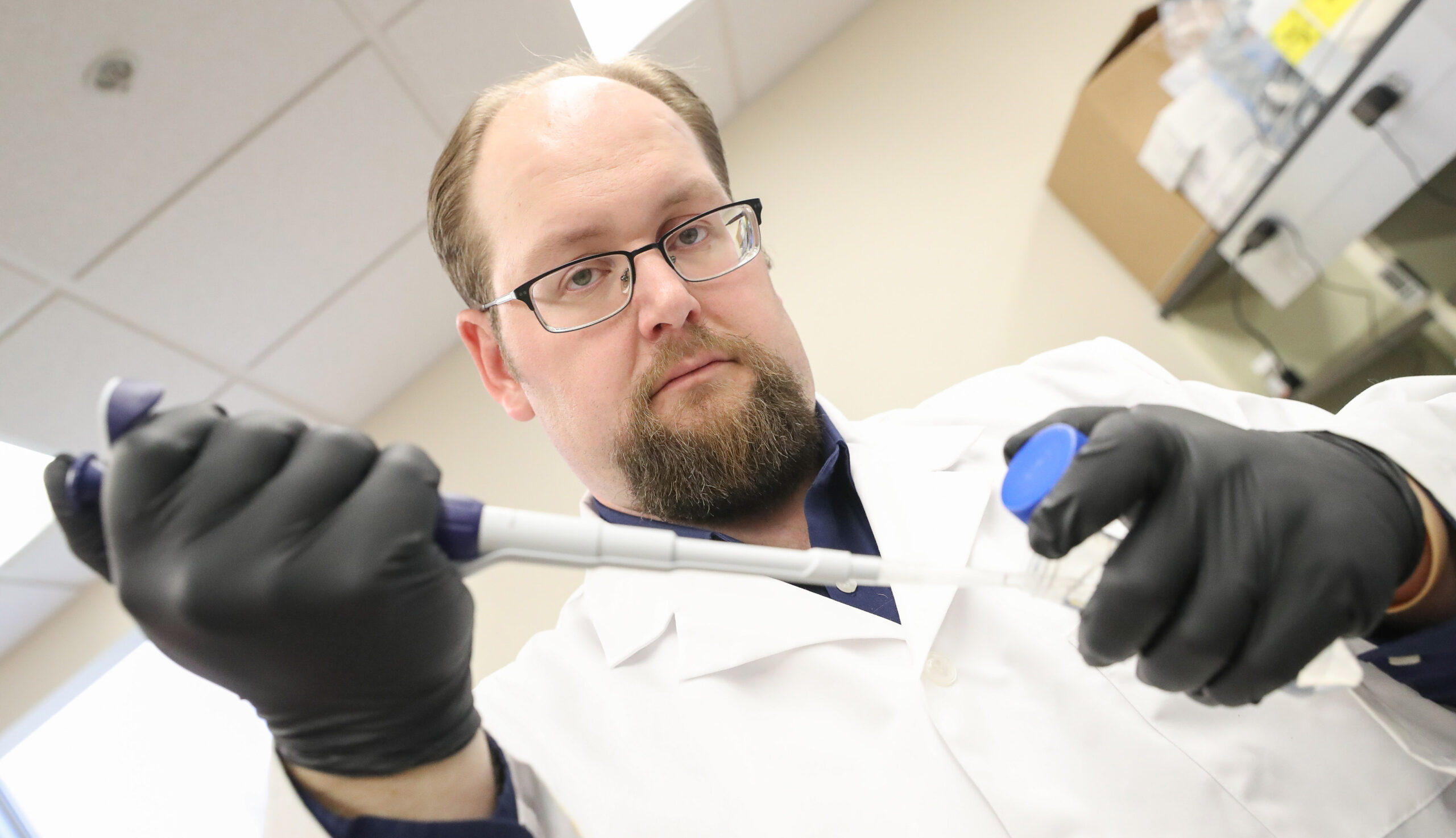There are three things the University of Nebraska at Kearney has that drew Joe Dolence, PhD, to the middle of Nebraska that combined other, more prestigious institutions lack.
A strong research infrastructure.
The Nebraska INBRE program.
And the Kearney community simply reminds Dr. Dolence of his hometown.
Eveleth, Minn., is a small town of about 4,000 people in the northeast corner of the state. It’s where Dr. Dolence, an associate professor of biology at UNK, first dreamed of working for the Mayo Clinic.
“Growing up in Minnesota, Mayo was always a big deal, it still is, and I always wanted to go there,” he said.
After graduating from The College of St Scholastica, Dr. Dolence pursued his doctoral degree in immunology at the Mayo Clinic.
He left in 2016 to pursue another dream, to become a teacher.
“I started my love of teaching as a teaching assistant at St. Scholastica. I knew I wanted to teach undergrads, but I had to get teaching experience, so I went to the University of Minnesota in Morris, Minn.,” he said.
After two years there a job opportunity opened up at UNK and Dr. Dolence knew it had everything he was looking for – a community that feels like home, the opportunity to teach subjects he loves, immunology and molecular biology, and a place to build on his research.
“It’s been an interesting journey,” he said.
As for his research, Dr. Dolence is interested in two aspects of peanut allergies – the variation in difference of rates of peanut allergies in females compared to males, Dr. Dolence and his students also are studying what happens to the human immune system in those initial moments after an exposure to peanuts triggers an immune response.
“There seems to be a protective component to testosterone that we’ve seen in mice, but we don’t know how or why this is,” Dr. Dolence said.
As a faculty mentor in the Nebraska INBRE program, Dr. Dolence has three undergraduate students, including one INBRE scholar, working in his lab with whom he shares his love of science.
Through using mouse models, Dr. Dolence can chronicle what takes place upon the initial exposure to peanuts as well as look at what happens to the immune system three days to a week later after the allergy is triggered.
They can also examine mice that have no testosterone and compare them to those that do to determine how testosterone influences the development of peanut allergy
Dr. Dolence credits the INBRE program for providing funding to his lab that enabled him to buy a flow cytometer which allows him to look at 14 different surface markers at once on individual immune cells.
“We are finding out some really interesting things and we get to ask both questions – why are peanuts eliciting this immune reaction and what are the roles of sex hormones in that process,” he said.
